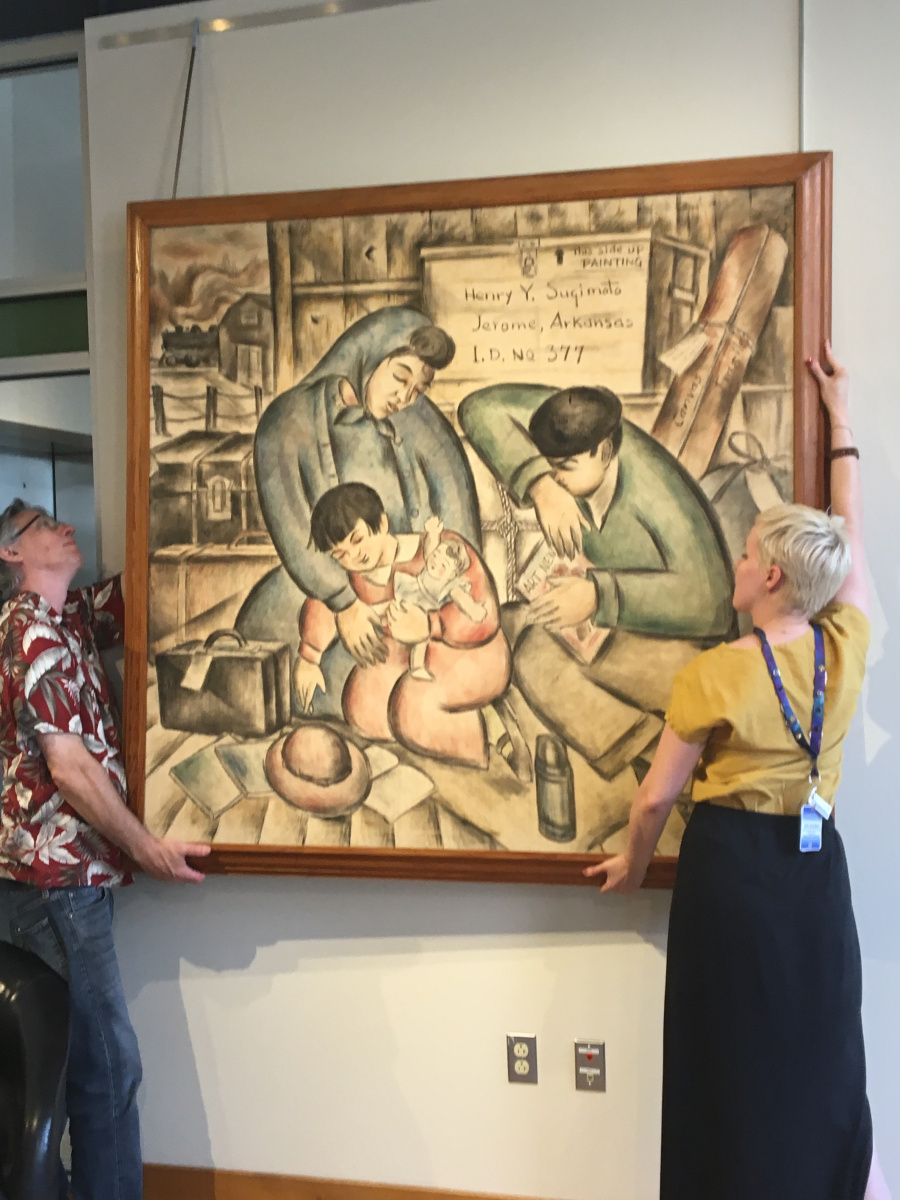calsfoundation@cals.org
An Artist in Prison is Still an Artist

He was an award-winning artist with a BFA in painting, and he lived in California.
He had studied the French masters in Paris.
His paintings had appeared in prestigious shows such as the Salon d’Automne.
And in 1942, he was taken from his California home, along with his wife and children, and imprisoned behind barbed wire in an Arkansas camp.
His crime? Being of Japanese descent in the United States of America.
Americans descended into wartime paranoia and racism after the bombing of Pearl Harbor. As a result, over 100,000 Japanese Americans were deprived of their homes, their jobs, their belongings and their pets, as they were imprisoned in camps across the country by the federal government.
The artist, Henry Sugimoto, was incarcerated first at Jerome, Arkansas, and then at Rohwer, Arkansas from 1942 until 1945. The two camps collectively held 17,000 people.
After arriving at Jerome, devastated from the trauma of losing his life’s work, Henry Sugimoto began to create sketches of life at the prison camp. He rediscovered a sense of purpose as he decided to document through his art the incarceration experience of Japanese Americans.
“Arrival at Jerome,” one of his powerful camp paintings, was exhibited in 1944 at Hendrix College, while Henry Sugimoto was still incarcerated. This exhibition was the result of the advocacy of several Hendrix art faculty members including Louis Freund, Elsie Freund, and Floyd K. Hanson, who had visited Sugimoto at the Jerome prison camp.
Now “Arrival at Jerome” joins artworks from others imprisoned at the Rohwer Camp in “A Matter of Mind and Heart,” the Butler Center’s ongoing exhibition at Concordia Hall.
See “Arrival at Jerome” and “A Matter of Mind and Heart: Portraits of Japanese American Identity” at 2nd Friday Art Night’s reception, August 10 from 5pm to 8pm.
This project was funded in part by a grant from the U.S. Department of the Interior, National Park Service, Japanese American Confinement Sites Grant Program.
The Butler Center thanks Hendrix College for loaning Henry Sugimoto’s work to “A Matter of Mind and Heart,” as we honor and commemorate those Japanese Americans incarcerated in Arkansas during WWII. We are also indebted to the research and source material from Hendrix that informed this piece.




